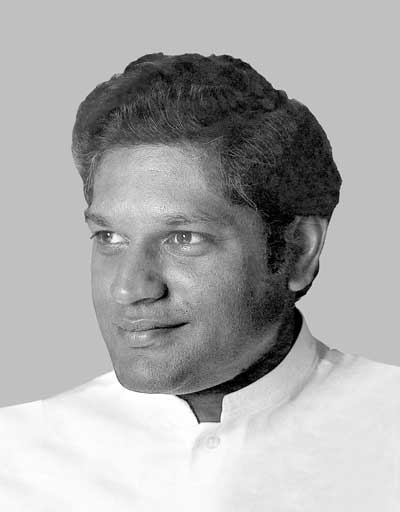CULTURAL ICON
Deshamanya Geoffrey Bawa
Edwards, Reid and Begg
Deshamanya Geoffrey Bawa not only defined an architectural style, he envisaged a cultural identity that has come to be received as and represent a ‘Sri Lankan-ness.’ In truth, the sources of Bawa’s inspiration lay not only in the colours and contours of this tropical isle, but also in the sensibilities and scents of the Mediterranean.
Bawa came to architecture via the circuitous route of English, law and travel across several continents. In 1948, while attempting to transform an abandoned rubber estate, which had reverted to tropical wilderness on the southwest coast of the island into an Italian garden, he found himself stymied by a lack of technical knowledge.
In 1951, he had apprenticed himself to H. H. Reid, the sole surviving partner of the Colombo architecture practice Edwards, Reid and Begg. On Reid’s death in 1952, Bawa – who aspired to a career in architecture – returned to England and enrolled as a student at the Architectural Association in London.
Six years later, at the age of 38, he returned to Sri Lanka as a qualified architect to take over what was left of Reid’s practice.
Colonial and traditional Ceylonese architecture, the role of water in design, and his close association with like-minded artists and designers gave rise to that distinctive Bawa style encompassing open spaces, the free flow of movement inside a building, and the use of indigenous materials and crafts.
He has been hailed as being among the most influential Asian architects of his generation and as the principal force behind ‘tropical modernism.’ Bawa’s unique design sensibilities permeated his structures – in the innovative ways in which he used light, spaces and materials to work in harmony with even the most challenging environments.
Bawa’s deconstructed colonial bungalows’ and the whitewashed structures of his ‘tropical modernist’ style were considered the epitome of a design identity of a newly independent Sri Lanka. His design ethos remains inimitable but continues to be one that those who aspire to follow in his footsteps make vain attempts to interpret and emulate.
Perhaps what is most telling about his legacy is that it captures the character of a whole nation, as Michael Ondaatje said in a tribute: “Art is a long intimacy. The scale of the achievement might be grand and take years, but it has to be personal and carefully pieced together and specific to its culture.”
Geoffrey Bawa: cultural icon of the Sri Lankan identity.






